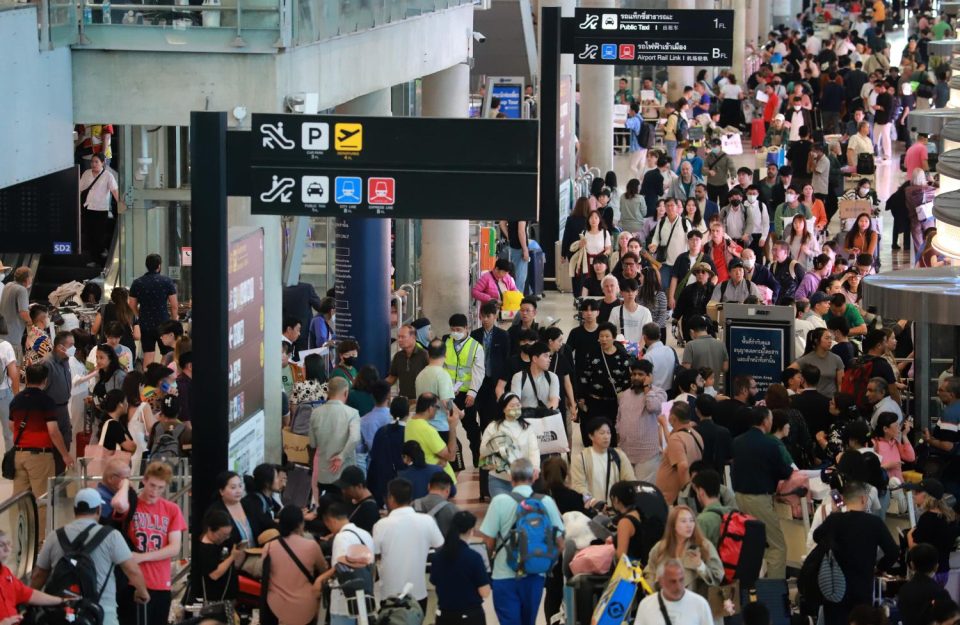Traffic congestion outside Suvarnabhumi airport’s departure halls, where cars and taxis compete for parking spaces, has become a common sight for departing travelers. For arriving passengers, long lines at immigration checkpoints and baggage claims have become the norm due to broken kiosks and staffing shortages that have yet to be adequately addressed.
In response to complaints from tourists, Prime Minister Srettha Thavisin made an unexpected visit to Suvarnabhumi airport earlier this month. Following the visit, he instructed authorities to streamline airport procedures to take 30 minutes or less for each passenger.
Thailand experienced an increase in foreign visitors last month, tallying 3.03 million, up from 2.1 million year-on-year. During the Chinese New Year holiday, all Thai airports collectively reported 872,235 arrivals, showing a 13.3% increase from the previous week.
The post-pandemic recovery in tourism has led international and local carriers to increase flight frequencies. However, staff shortages among airlines and airports globally have hindered this growth. The adoption of technology to mitigate the labor shortage has been challenging, as some systems have proven to be unstable while users in Thailand often have a low level of technology proficiency.
According to aviation IT provider SITA, by 2025, 63% of airports and 51% of airlines globally are expected to have self-boarding gates using biometrics only. Furthermore, 53% of airports are anticipated to implement a secure single biometric token for all touchpoints by 2025.
Airports of Thailand (AoT) announced an increase in passenger service charges at six international airports from April 1, 2024, which will be managed via the new operating system called Common Use Passenger Processing Systems (Cupps). This additional tax is embedded in ticket prices, resulting in a new total service charge of 730 baht.
AoT’s six airports and other airports under the Department of Airports will implement a new levy through Cupps. This system is expected to reduce long queues at check-in counters, though some congestion during peak hours is inevitable.
As the industry faces staffing shortages, the adoption of technology and automation becomes crucial. While there is concern about automated systems causing mass layoffs, it is projected that these technologies will enhance passenger services and increase operational efficiency.
However, the uptake of technology in Thailand has been slow compared to airports in Europe and the US, as passengers and airport staff take time to adapt. The physical structures of older airports also present challenges in fully embracing cutting-edge technologies.
Despite these challenges, the industry is moving towards adopting digital operations, and cloud technology is making this transition more affordable and accessible for airports of all scales. This adoption is expected to enhance operational efficiency and improve the overall passenger experience.
READ MORE STORIES: http://pattayaone.news





